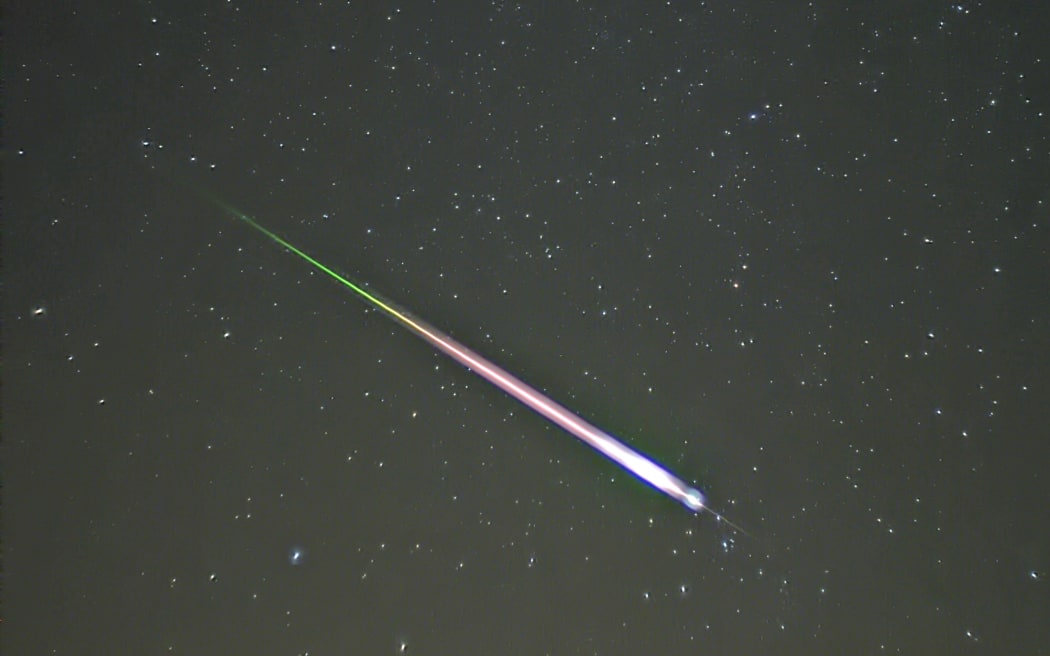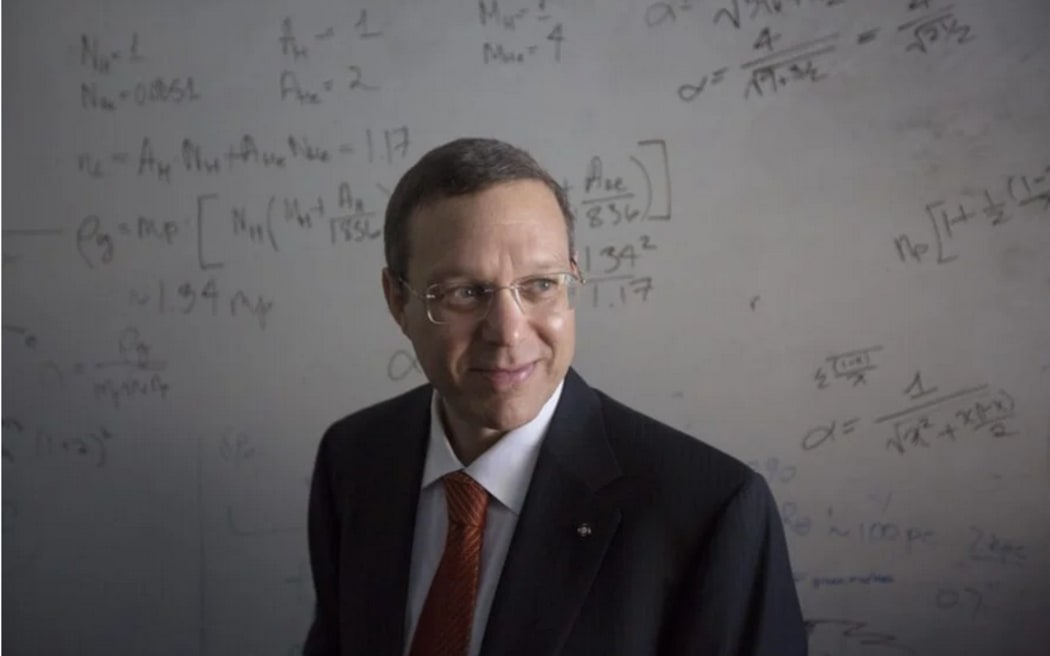Looking for a UFO which crashed into the Pacific Ocean in 2014
Eight years ago, an unidentified object a bit bigger than a basketball fell into the ocean near Papua New Guinea.
Astrophysicist Avi Loeb wants to know what it was that fell to Earth and he’s planning an expedition to find out.

A meteor photographed in 2009
Photo: CC BY 3.0
The still-unidentified object came down so fast that scientists speculated it could have come from outside our solar system.
Later, US Space Command confirmed it is the first known large interstellar object to impact Earth.
To find fragments of whatever is, Avi Loeb, a professor at the Harvard-Smithsonian Center for Astrophysics, is planning an expedition to its landing site.
He tells Afternoons some fellow members of the scientific community have pushed back on the privately-funded project – a stance that reflects a lack of curiosity and overabundance of ego.
In his popular science book Extraterrestrial: The First Sign of Intelligent Life Beyond Earth, Loeb writes that he wasn’t aware of the meteor until February 2019 when a New York radio interviewer mentioned it.
To try and learn more about it, he studied other extraterrestrial objects documented by the US government in the past decade.
“The US government has a missile warning system where they have satellites and ground-based sensors that look for potential national security threats and every now and then they see an object coming into the atmosphere from far away, and that is a natural object, a rock, meteors that burn up in the atmosphere.”
Loeb asked one of his students to look at the fastest-moving meteors in recorded history.
“If an object is moving very fast the sun’s gravity is unable to trap it and just came into the solar system from outside then these will eventually exit the solar system. So it’s not like the planets that go around the sun because they go too fast. So he was checking and then we found that there was a meteor recorded on January 8 2014 and was spotted about 100 miles off the coast of Papua New Guinea.
“It burned in the lower atmosphere of the Earth and was moving at 45km per second. And we went back in time and realised that, in fact, it was definitely not bound to the sun, it was moving at 60km per second outside the solar system, taking into account the motion of the Earth around the Sun, and it was moving faster than 95 percent of the stars in the vicinity of the sun.
“So not only was it not bound to the sun, but it was actually faster [than] stars near the sun.”

Harvard Professor Avi Loeb
Photo: Harvard University
In a scientific paper, Loeb and his team stated that this object, a bit bigger than a basketball in size, was the first interstellar meteor.
In March 2022 this year, the US government released a letter to NASA, stating that it was 99.999% confident Loeb’s paper was correct – and the object came from outside the solar system.
New information released about the meteor allowed Loeb and his students to determine the unusual strength of the material involved.
“The government also released, together with this letter, the light curve from the fireball from the explosion of this meteor, about 18.7km above the ocean surface, 100 miles off the coast.
“And from analysing this data, we were able to infer that the material strength of this object was tougher than iron and it was tougher than all other 272 meteors in the [US government] catalogue. So in other words, this object represents just 0.3 percent of the population of all space rocks.
“And so it’s an outlier. It’s unusual in terms of its speed… it also is much tougher than any meteor within the catalogue. So the question is, what is it?”
If the object is ‘natural’ it must originate from a source very different to our solar system, Loeb says.
“The toughest space rocks we see are iron meteorites, and they represent 5 percent of the space rocks and but this one was even tougher than iron.”
Alternatively, it may also be artificial in origin – possibly part of a spacecraft.
To determine whether this was a very unusual rock, or an artificial object produced by another technological civilisation, Loeb believes a team must go to the area where it landed and dredge the ocean floor to collect fragments.
Finding these will be difficult but not impossible, he says.
Now the wait is on to find a suitable boat and build specialist equipment for the mission.
“We know where the explosion took place, we then need to assume something about the distribution of fragments, in terms of their sizes.
“And then from the wind that was in the area at that time and from the ocean currents, we can calculate where the fragments should be, depending on the size. What we’re planning to do is go there with a boat and have a sled connected to a magnet that basically scoops the ocean floor skims the surface of the floor of the ocean and looks for those fragments in the area that we know that landed.
“It’s sort of like mowing the lawn – we would have to go back and forth over a couple of weeks.”
Loeb’s project has $1.5 million in funding, thanks to some wealthy individuals who are excited by this scientific endeavour.
He is scornful of sceptics who suggest the object may be artificial and therefore the project a waste of time and money.
“The only way to find out – and that’s what science teaches us – is by collecting evidence. And that was the big lesson learned from the experience of Galileo. Galileo was saying, ‘look through my telescope and you might conclude, just like I did, that the Earth moves around the Sun’. And the people at this time said, ‘No, we don’t want to look through a telescope, we know the answer. We’ve been saying that for 1000 years, and how dare you contradict that’. And so they put him on house arrest. Today, they would have cancelled him on social media, they would have said that it’s far-fetched.
“But my point is, what he taught us is, reality is whatever it is, it doesn’t matter how many likes you get for a statement on Twitter, that’s not the measure – the measure is whether we describe reality.
“It’s our obligation to collect evidence and learn about the reality that we live in, rather than pretending that we know everything in advance, which is pretty much what the experts tell you. Experts rely on their past knowledge and they get their ego boost by claiming that they can explain everything based on their past knowledge. And if they see something in the sky, they would say, oh, it’s natural. It’s a rock. Why? Because everything they worked on in the past, their reputation, their prestige, is based on analysing rocks.”
Scientists are not immune to negativity and a lack of desire to explore bigger questions, Loeb says.
“I was chair of the Astronomy Department at Harvard for nine years, three consecutive terms, the longest serving chair, and I know the drill within academia. You very often need to convince funding agencies that are populated by mainstream scientists who argue we shouldn’t take risks because we’re wasting taxpayers’ money. Well, guess what? This question is most interesting for taxpayers, yet such an expedition cannot be funded in the standard way…
“Within academia we have the experts trying to push back. It’s sort of like, out of jealousy or something else. They’re trying to step on any flower that rises above the grass level. And my point is, let many flowers bloom. Let’s just be humble and modest. That’s the main message that nature gives us, over and over again, be humble.
“Just look at the data, try to collect more evidence that will guide you. But humans refuse to go that path, even though you know, we have a long history that teaches us that it works. The evidence should give us a sense of reality. Yet, even within academia, people have a problem with collecting them. Of course, if you say it’s an extraordinary claim, it requires extraordinary evidence for me to even explore it, then you will never find the evidence.
“That’s a statement made by Carl Sagan that extraordinary claims require extraordinary evidence. My point is extraordinary evidence requires extraordinary funding. And if you don’t find the search, you will never find anything. And we need to be open-minded with something intriguing shows up, we should simply study it without fear, because once we realise what it means, then we can adapt to it.”
The implications for Papua New Guinea, the country closest to where the object landed, are far-reaching, Loeb says.
He believes this discovery could shape the way humanity looks at life itself and how it should be lived.
“I think it will change our aspirations for space, our view about our place in the universe.
“I should say that there is something common to the frontiers of science and spirituality. In both cases, we are exploring the unknown. And so, I find a lot of interest from religious people, from people that enjoy spirituality, because they are used to the idea that there is uncertainty in exploring the unknown. That’s the spirit of discovery, the spirit of innovation, and I very much hope that in the future more scientists will explore that.”


